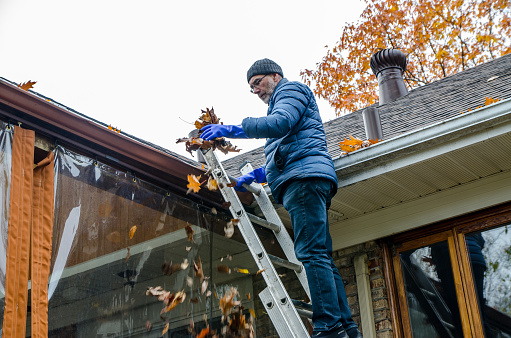Introduction: Prioritizing Safety During Cold-Weather Roofing Work
Cold-weather roofing repairs and inspections are essential to maintain the integrity of your roof during the winter months. However, working on a roof during chilly and potentially icy conditions can pose safety challenges. It’s crucial to prioritize safety to avoid accidents and injuries. In this article, Ainger Roofing, a roofing contractor in Barrie, Ontario will provide roofing safety tips specifically tailored for cold-weather repairs and inspections, allowing you to safeguard yourself and your team while maintaining your roof effectively.

1. Dress Appropriately for the Cold
– Layer Up
Wear multiple layers of clothing to stay warm and be able to adjust your attire as needed during temperature fluctuations.
– Choose Insulated and Waterproof Gear
Invest in insulated and waterproof gear to protect yourself from the cold and potential exposure to moisture.
2. Check Weather Conditions
– Avoid Roofing in Inclement Weather
If there are icy or extreme weather conditions, avoid roofing work until it’s safe to do so.
– Monitor Wind Speeds
Be cautious of high winds, as they can create dangerous working conditions and increase the risk of accidents.
3. Use Proper Roofing Equipment
– Secure Ladders and Scaffolding
Ensure ladders and scaffolding are secure and stable to prevent falls and accidents.
– Use Roof Brackets or Safety Harnesses
When working on steep roofs, utilize roof brackets or safety harnesses to provide additional fall protection.
4. Be Mindful of Icy Surfaces
– Remove Snow and Ice
Clear snow and ice from the roof and walking areas to minimize slipping hazards.
– Use Ice Cleats
Wear ice cleats on your shoes to improve traction and stability on icy surfaces.
5. Plan for Daylight Hours
– Work During Daylight
Schedule roofing work during daylight hours to ensure better visibility and reduce the risk of accidents.
– Use Adequate Lighting
If necessary, use adequate lighting to illuminate the work area during low-light conditions.
6. Team Communication and Safety Training
– Maintain Clear Communication
Establish clear communication among team members and develop safety signals for potential hazards.
– Provide Safety Training
Ensure all team members receive proper safety training, especially for working in cold-weather conditions.
FAQs
- Is it safe to work on a roof during winter? With the right safety precautions and gear, roofing work during winter can be safe and successful.
- What is the best time of day to do roofing work in winter? Roofing work during daylight hours is preferable for better visibility and safety.
- Do I need special footwear for roofing in winter? Yes, wearing ice cleats or footwear with good traction is essential for stability on icy surfaces.
Conclusion: Safety First for Successful Winter Roofing
Winter roofing repairs and inspections are necessary to maintain your roof’s integrity and protect your home from the elements. However, safety should always be the top priority when working in cold-weather conditions. Ainger Roofing, a roofing contractor in Barrie, Ontario says by dressing appropriately, checking weather conditions, using proper roofing equipment, being mindful of icy surfaces, planning for daylight hours, and prioritizing team communication and safety training, you can ensure a successful and accident-free winter roofing maintenance. Stay safe, stay warm, and protect your roof and your well-being during the colder months.
